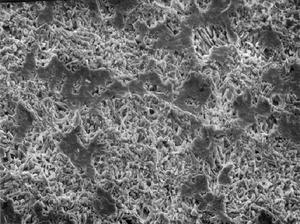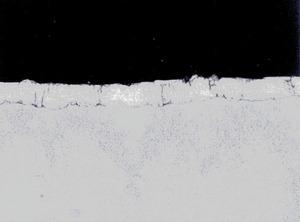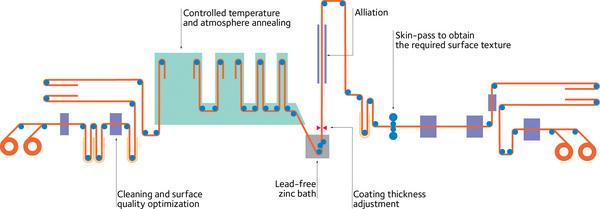Products
Product pages available in
EN - DE - FR - ES
Sustainability
News, events and stories
Galvannealed zinc-iron alloy coated steels
Applications
The excellent corrosion protection and high surface quality offered by Galvannealed coatings make these products well suited for numerous automotive applications involving both exposed and non-exposed parts. The presence of iron in the coating improves resistance spot welding behaviour, so that Galvannealed products are especially recommended when joining proves difficult with other coatings.
Mechanical properties
Surface appearance
The high surface quality of Galvannealed coatings enables a finished paint appearance which meets the manufacturers' most stringent requirements for exposed bodywork parts.
Hardness
Galvannealed coatings are hardened by the presence of iron. Hardness depends on the proportions of the different alloy phases, which can be controlled via the galvannealing parameters. This hardness can lead to a risk of powdering during severe deep drawing operations, particularly for higher coating loads. For this reason, we recommend thinner coatings than in the case of Extragal®.
The coating hardness also leads to a reduction in the Lankford r ratio, as measured during tensile tests, resulting in reduced deep-drawability.
Morphology
-

Surface view of Galvannealed coating (scanning electron micrograph)
-

Cross-sectional view of Galvannealed coating
Coating thickness
Unless otherwise specified, the standard Galvannealed coating thicknesses offered are as follows (per side, measured at one point):
| Reference (or similar standard) | Minimum | Maximum | ||
|---|---|---|---|---|
| µm | g/m2 | µm | g/m2 | |
| ZF90 | 4.2 | 30 | 7.7 | 55 |
| ZF100 | 5.6 | 40 | 9.1 | 65 |
Other thicknesses may be considered. Please contact us for more information.
Coating process
Galvannealed coatings are produced by continuous hot dip galvanizing, in which the steel strip is fed through a bath of molten zinc. The steel substrate can be selected from most of our cold rolled steel products. After leaving the zinc bath, the strip is subjected to heat treatment, which causes iron atoms in the substrate to diffuse into the zinc layer. The Galvannealed coating formed in this way is a zinc/iron alloy containing about 10% iron.

Typical layout of a galvannealing line in the Galvannealed configuration
Please see the product technical sheets to know the availability of Galvannealed coating.
Recommendations
Corrosion
Galvannealed coatings provide excellent corrosion protection, even in the event of damage (impact, scratches, stone chipping), due to the electrochemical behaviour of the Fe-Zn galvanic couple (sacrificial anode effect).
In the event of damage, the presence of iron in the coating gives the Galvannealed corrosion products a reddish tinge, which should not be interpreted as a sign of substrate corrosion.
Drawing
Galvannealed coating has a low friction coefficient, facilitating metal flow between the punch and the die. The friction coefficient may vary significantly as a result of lubrication factors (type and quantity of oil or pre-lubricant). However, the greater hardness of this coating (due to the presence of iron) can make deep drawing operations more difficult (risk of powdering, decrease in r value).
Note:
The galvannealing treatment used to diffuse iron into the zinc coating can be varied to control the properties of the coated product, particularly the tendency to powdering. We recommend that you contact our technical support teams to specify the exact coating parameters.
Welding
The hardness and melting point of this coating leads to weldability close to that of uncoated sheet, with excellent electrode life values.
Example based on ISO standard 18278-2: CR4 steel Galvannealed 45/45 with 0.7 mm thickness: weldability range from 8.6 to 9.6 kA with electrode life of 1200 spots without adjustments.
Adhesive bonding
Galvannealed layers have good bonding behavior, adhesion to the coating, adhesion of the coating to the metal and cohesion of the coating. The most important parameters determining bond quality are the type of adhesive, the joining conditions, the nature of the protective oil, and any chemical treatments that may have been performed.
Surface treatment
Galvannealed products can be phosphated and painted at the user's premises using current processes. The cataphoresis process may need to be adapted to avoid cratering problems caused by the particular micro-texture of this coating.
ArcelorMittal can provide customers with technical assistance to overcome problems of this type.






